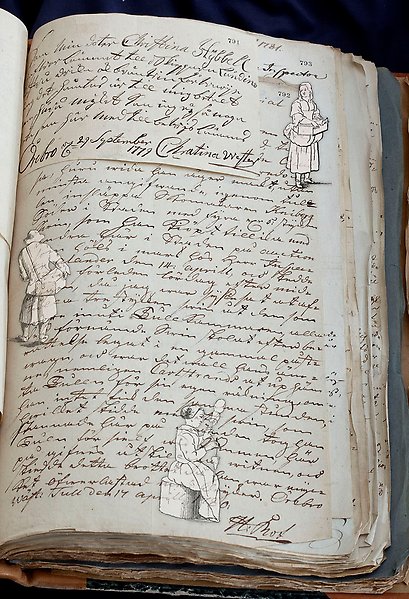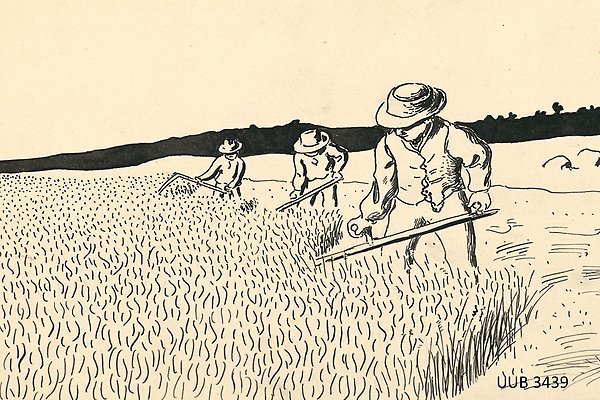The verb-oriented method
The notion of the “verb-oriented method” emphasizes the kind of data that is of interest when posing research questions regarding gender and work in the past. While other research has collected information about how people were labeled (job titles) and what they had for resources (property), within Gender and Work we focus on descriptions of what people did. In other words: rather than looking at nouns, we look at verbs.

A page in a court record may contain a number of activities. Photo: Lars Köhler and Nordiska Museet. Design: Ulf Carlén
More about the method
Another way to explain our work is to say that we study the ways that people used the time they devoted to support and sustenance. Early modern sources obviously do not allow us to study people’s use of time over an entire 24-hour period (which, of course, would be ideal), but the verb-oriented method gives us snapshots of the tangible daily activities of women and men, young and old, poor and rich.
The verb-oriented method is inspired by Sheilagh Ogilvie’s study A Bitter Living: Women, Markets, and Social Capital in Early-modern Germany.
The verb-oriented method emphasizes the idea that traces of the past often take linguistic form. As such, these traces are never neutral representations of actual activities, but are instead dependent upon linguistic conventions, cultural concepts, the writers’ aims and intentions, and so forth. The verb-oriented method affords the researcher, then, the opportunity to analyze not only what different people did, but also how these activities were described in various contexts.

A fictitious example
Read a fictitious example of implementing the verb-oriented method when registering verbs in the database.
